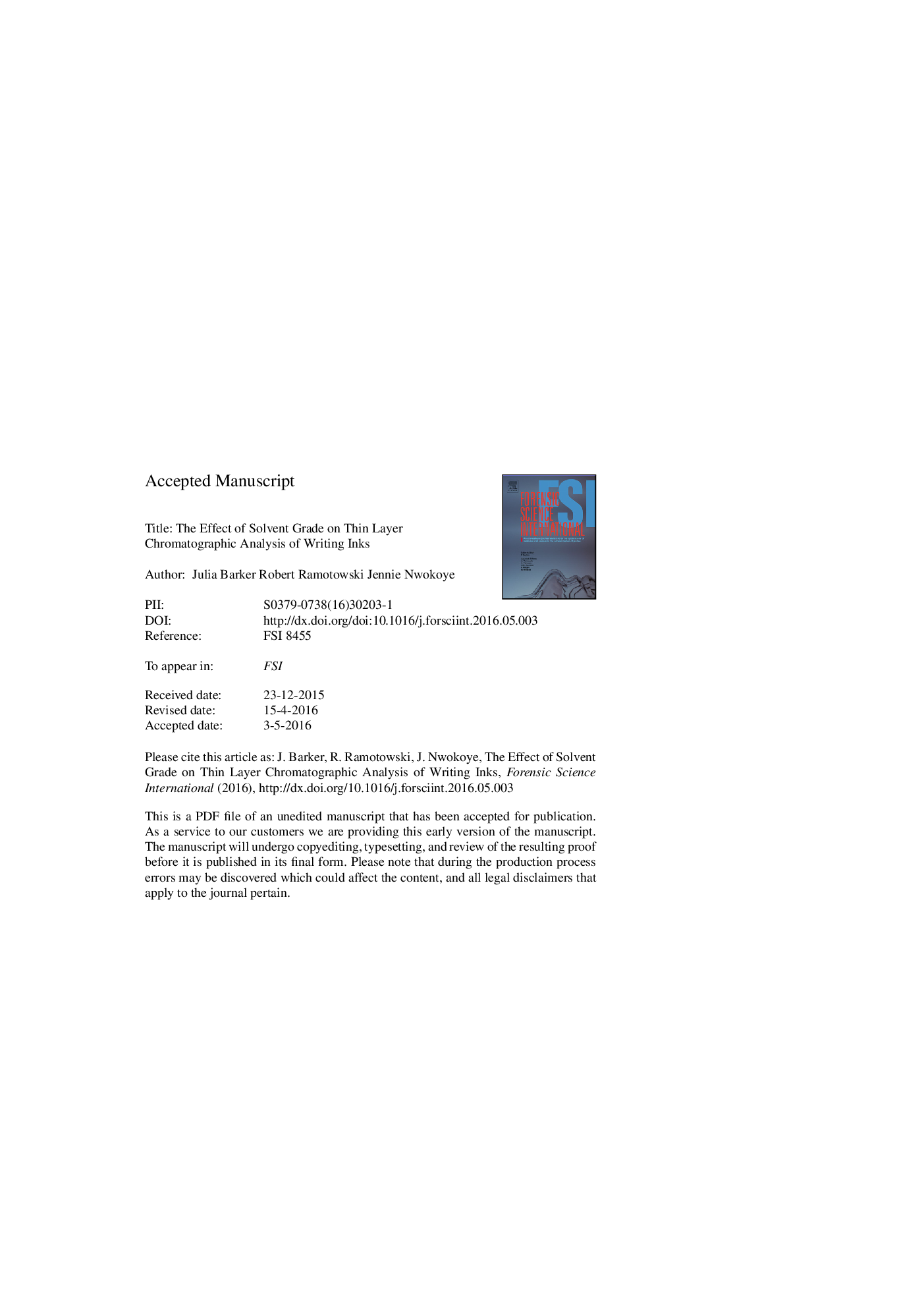| کد مقاله | کد نشریه | سال انتشار | مقاله انگلیسی | نسخه تمام متن |
|---|---|---|---|---|
| 6551547 | 160412 | 2016 | 37 صفحه PDF | دانلود رایگان |
عنوان انگلیسی مقاله ISI
The effect of solvent grade on thin layer chromatographic analysis of writing inks
ترجمه فارسی عنوان
اثر درجه حلال در تجزیه و تحلیل کروماتوگرافی نازک ناز نوشتن جوهر
دانلود مقاله + سفارش ترجمه
دانلود مقاله ISI انگلیسی
رایگان برای ایرانیان
کلمات کلیدی
موضوعات مرتبط
مهندسی و علوم پایه
شیمی
شیمی آنالیزی یا شیمی تجزیه
چکیده انگلیسی
The effects on the separation of writing ink dyes and the repeatability of the Rf values from using different grades of chemicals used in solvent system I (SSI) and solvent system II (SSII) for thin-layer chromatographic (TLC) ink analysis were studied. Solvent system I consists of a 70:35:30 mixture of ethyl acetate, ethanol, and water. Solvent system II consists of a 50:10:15 mixture of ethanol, water, and n-butanol. Since 1991, the ASTM International Guideline E 1422 has recommended that the purity of solvents should be “reagent grade” and that water quality should be “distilled or equivalent.” A total of 25 blue and 25 black inks were selected for analysis. Thirteen of each color ink were ballpoint and the remainder were non-ballpoint. The observations show that there is a solvent grade effect on both the separation and clarity of the ink dyes and the repeatability of their Rf values. These results indicate that the grades and manufacturers of solvents used in solvent systems for thin-layer chromatography must be consistent. This is especially critical for searching TLC plates against those from a large ink library in casework. Overall, the combination of solvents that produced the best results for solvent system I consisted of denatured ethanol, HPLC grade water, and ACS grade ethyl acetate. There was no consensus for the best combination of solvent grades for solvent system II; however, it was shown that different grades did have an effect on the separation of ink components.
ناشر
Database: Elsevier - ScienceDirect (ساینس دایرکت)
Journal: Forensic Science International - Volume 266, September 2016, Pages 139-147
Journal: Forensic Science International - Volume 266, September 2016, Pages 139-147
نویسندگان
Julia Barker, Robert Ramotowski, Jennie Nwokoye,
